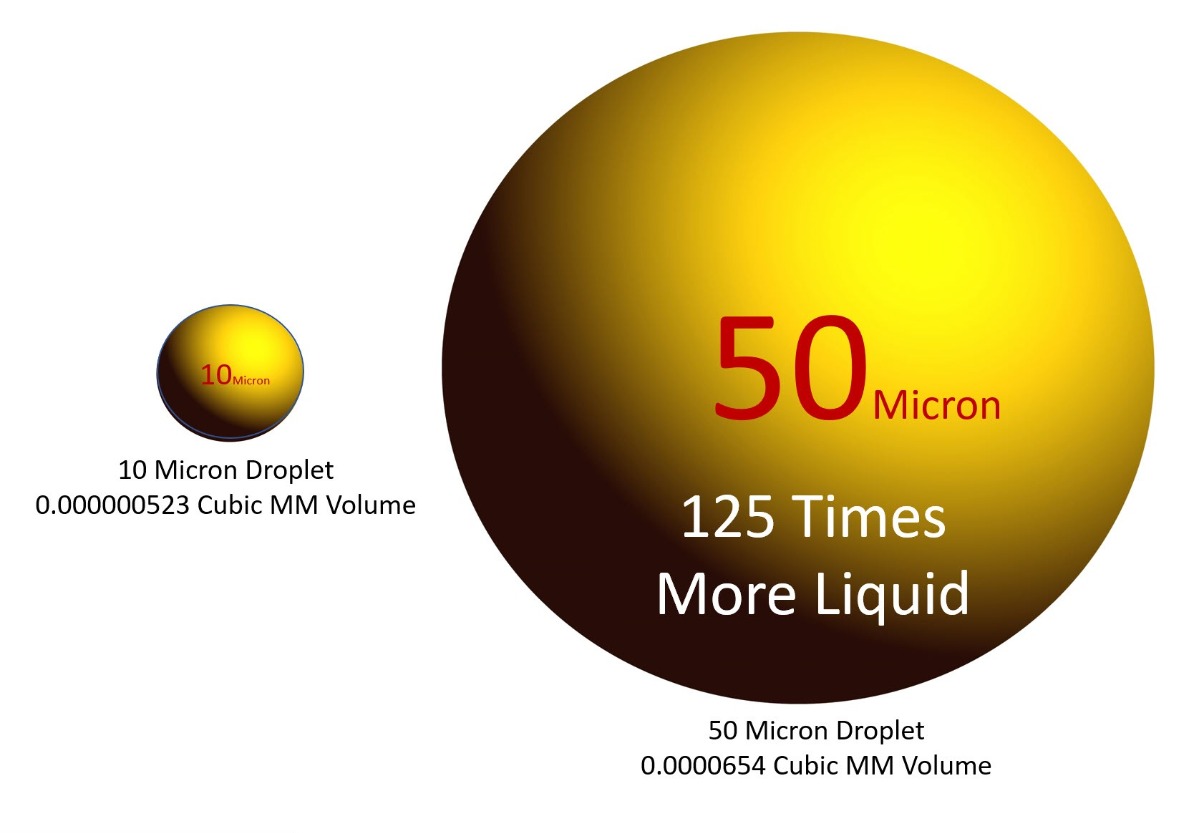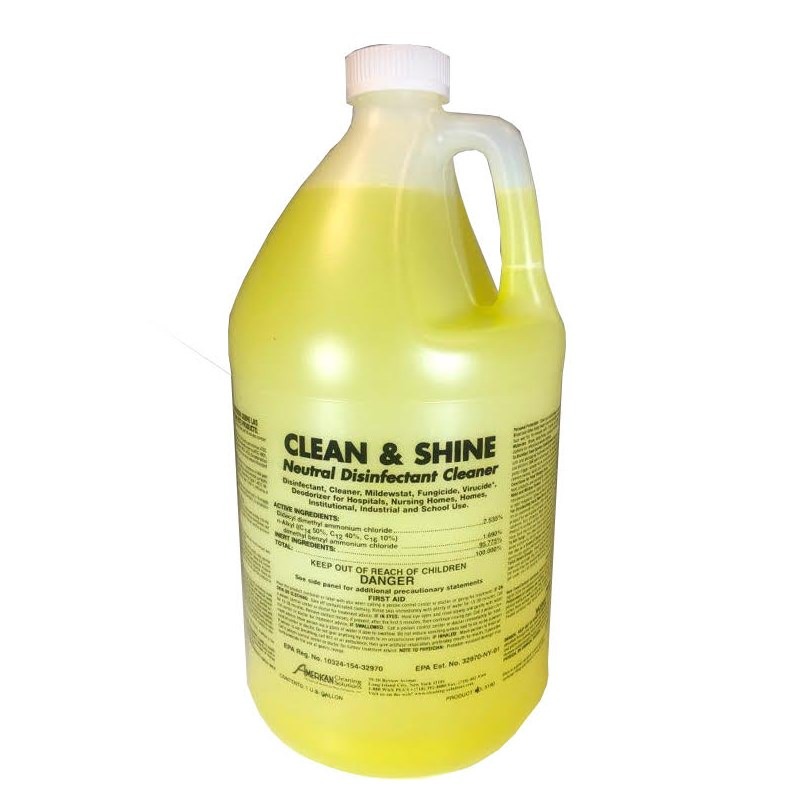How Disinfectant Micron Size Affects Your Sanitizing Processes
Interior and exterior sanitizing is a natural and necessary new add-on service for many in the window cleaning and pressure washing industry. The equipment and supplies are affordable and easy to use, once you get the hang of it. Our preferred disinfectant, Clean and Shine, is extremely affordable, as one gallon of Clean and Shine concentrate makes 64 gallons of finished product.
Clean & Shine Disinfectant
Clean and Shine is an EPA-registered, extremely effective, EPA-registered disinfectant, deodorizer, and cleaner specifically designed for use in offices, hospitals, nursing homes, schools, and food service, etc. for use on all hard surfaces, floors, counters walls, glass, tile, and is effective as a no rinse sanitizer on non-porous food contact surfaces. This product kills Human Coronavirus, HIV-1, Herpes Simplex, Salmonella, Pseudomonas, Strep, MRSA etc.
- Light Yellow Liquid,
- Pleasant Summer Breeze Fragrance.
- Concentrated
- Dilution: 2 ounces per gallon of water
- 1 Gallon concentrate makes 64 gallons finished product
Sprayers are affordable too, ranging from just a few dollars for a trigger sprayer to around $750, with the average price being $300 or less. However, each type of sprayer works differently (See "How to Select the Best Sanitizing Sprayer for Your Needs"), and the sanitizing process takes some understanding and practice in order to work efficiently and without problems.
How to Apply Your Disinfectant with a Sprayer
When sanitizing, you really only need enough Clean and Shine to barely moisten the surface. You don’t want to douse the surface so that it pools. From a germ standpoint, it’s not going to hurt to have more disinfectant, but you could potentially damage the surface or leave a stain. Too much disinfectant also means you're wasting product, although with Clean and Shine being so affordable, the added cost is minimal.
This is where droplet size comes in.
Droplets are measured in microns. Because droplets are spherical, not flat like a circle, the total droplet volume increases significantly with each increase in micron size. As the illustration below shows, a 50 micron droplet is not just 5 times as big as a 10 micron droplet. The 50 micron droplet actually contains 125 times more liquid than a 10 micron droplet! That's a HUGE difference!
Why is this important? Because the larger the droplet, the wetter the surface will be.

Sprayers and Droplet Sizes
As explained in “How to Select the Best Sanitizing Sprayer for Your Needs” some types of sprayers – like the ULV and Electrostatic sprayers – let you adjust your micron size, from 5 up to 50 microns. Five microns give you a nice, light mist, which is good for interior surfaces like desks or front counter areas, especially if you're sanitizing electronic surfaces. If you're cleaning restaurant tables and chairs on an outside patio, you can crank that up to 50 microns and get it sanitized quickly.
However, other sprayers – like trigger sprayers and electric sprayers – do not let you control the micron size. For trigger and electric sprayers where you cannot control the micron size of the droplet, you have to manually manipulate how you spray in order to keep from dousing the surface. This means moving quickly as you spray in order to prevent too many droplets from lingering in one spot for too long.
Think of it like spray painting. If you are spray painting a surface and you spray too long in one spot, the paint will drip. But if you go too quickly, you won’t spray enough paint to cover the surface. This is the same issue you run across with trigger and electric sprayers. With time, you'll gain a better feel for how quickly you should move.
In the video below, Steve Blyth demonstrates micron size using a ULV Backpack sprayer where he adjusts the micron size from 5 microns to 50 microns to show the difference in spray. (Skip to the 4:43 mark to start it at the demonstration.)
Spraying Sanitizers Takes Practice
While sanitizing surfaces is not difficult, it does take some practice. The type of sprayer you use for sanitizing surfaces will depend on your customer base and your budget. No matter which type you use, be sure to wear the proper PPE when sanitizing, which should include masks and gloves at the very least.
You may also want to review some of our other Learning Center pieces:
How to Select the Best Sanitizing Sprayer for Your Needs
How to Efficiently Use Clean & Shine for Sanitizing Windows
Preparing Your Cleaning Business for a Post Pandemic Economy
How Madison Window Cleaning Uses Clean & Shine


